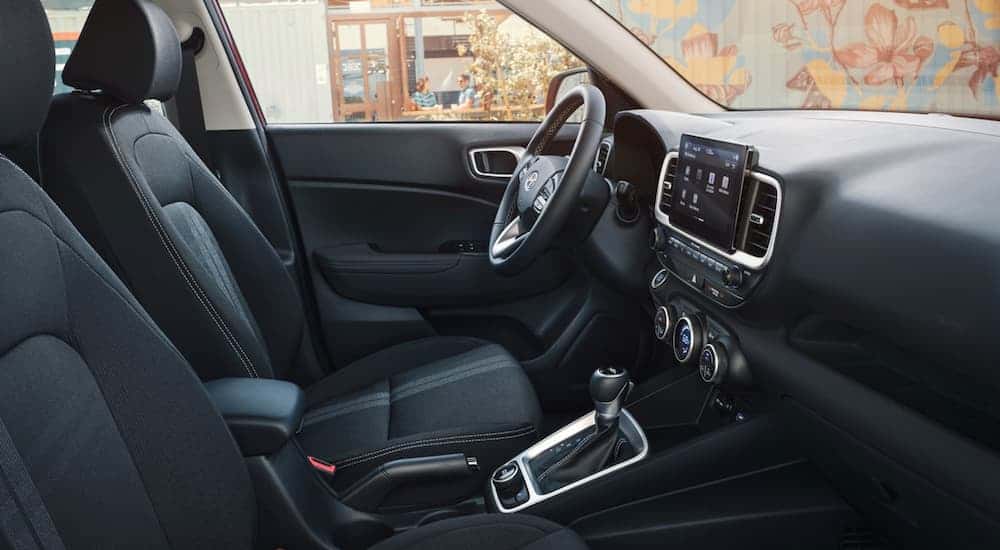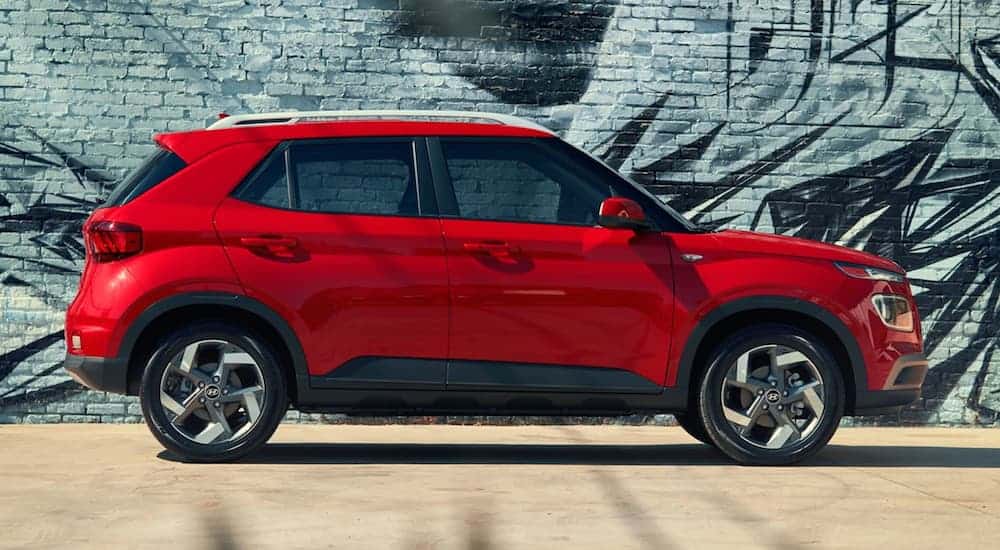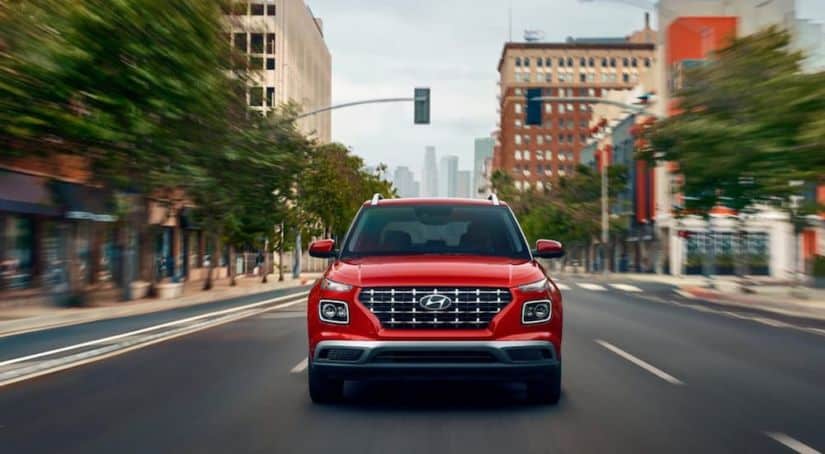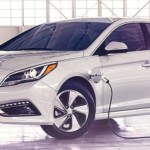Despite having years of success making value-packed, reliable, and stylish vehicles, Hyundai isn’t as much of a household name as brands like Honda and Toyota. That’s not a statement on the company’s quality. In fact, Hyundai has grown to produce some of the most advanced and dependable vehicles on the market today. Its newest crop of vehicles are not only advanced and dependable; they’re stylish and full of sophisticated driver assistance technologies.
Such is the case with the new Hyundai Venue, which debuted earlier this year as a 2020 model. It’s a small crossover that lines up closely with the Toyota CH-R, Honda HR-V, and even some hatchbacks like the Honda Fit. Hyundai says the Venue is targeted at young, professional car buyers that are seeking a solid urban runabout. That assessment is mostly spot-on, as most people will find the Venue ideal for in-town driving, but many will be disappointed with its sluggish acceleration on the highway.
I recently spent a week testing the Hyundai Venue, which was the second time I’ve been behind the wheel of one this year. Just like my initial drive of the vehicle back in January, I came away from the experience in love with the Venue’s feature set and value proposition. With a starting price of just $17,350 and a long list of standard tech, the Venue is a strong choice and should be attractive to a wide variety of buyers. Let’s take a look at what makes it so special.
It’s Small but Usable
The Hyundai Venue is marketed as a vehicle for young professionals that live in an urban setting. While that’s certainly a reasonable persona for the vehicle, it’s more useful than that classification might suggest. Behind the back seats, there’s 18.7 cubic feet of space, available and with the seats folded down, that number grows to 31.9 cubic feet. The interior is full of useful storage spaces, and the back seat itself is large enough to fit a full-size car seat without issue.
It’s Packed with Tech

In a vehicle that has a sub-$18,000 starting price, Hyundai packed in an eight-inch touchscreen, Apple CarPlay, Android Auto, Bluetooth, forward collision warnings, pedestrian detection, lane keep assist, driver attention warnings, and high beam assist. That’s an impressive list of tech for almost any vehicle, let alone one that has such a modest starting price. The range-topping Denim trim comes with even more convenience and driver assistance tech, such as cyclist detection, blind spot monitors, navigation, dual USB ports, and more.
It’s Not Sporty
The first-year Hyundai Venue was available with a manual transmission, but that didn’t help make it any more fun to drive, and the company discontinued the feature after just one year. Now, all Venue models come with a continuously variable transmission that pairs with its 121 horsepower four-cylinder engine. The combo is acceptable around town but won’t be suitable for people that like to dart quickly in and out of traffic. The engine just doesn’t put down enough juice to get the Venue moving with any real urgency. Reaching highway speeds takes a while, and once up to speed, passing is a chore.
Handling and ride quality are both comfortable. There’s a bit of body roll in hard corners, but the Venue’s suspension does a decent job of soaking up harsh bumps and rough roads. On the highway, the Venue has a tendency to wander a bit, especially in windy conditions or over broken pavement.
Fuel Economy Disappointment

The Venue is a small vehicle with a small engine, but that doesn’t always equate to the best fuel economy. The Venue has EPA-estimated fuel economy numbers of 30 MPG in the city and 34 MPG on the highway. Those numbers are nothing to scoff at, but they don’t match up with some of the Venue’s biggest competitors. For example, the Nissan Kicks is rated at up to 36 MPG on the highway, and because of the Hyundai’s size, it can also be compared to hatchbacks like the Honda Fit, where fuel economy can reach upwards of 40 MPG on the highway.
It’s Comfy
Small cars don’t often do the best job at making their occupants comfortable, especially over longer trips. That’s not the case with the Hyundai Venue, where the cabin is cozy but welcoming, and everything is laid out in an intuitive, sensible fashion. Tall drivers will find plenty of headroom up front, even with the optional sunroof installed, and shorter drivers will find a comfortable place to rest their arms. One hiccup with the Venue’s ergonomics is the fact that moving the seat forward may leave some shorter drivers with their knees buried in the dash before their feet reach the pedals.
It Has a Great Warranty
Hyundai and Kia used to have long warranties to ease buyers’ minds about their vehicles’ quality. In many cases, the warranties were absolutely required to avoid expensive and frequent repairs, but both companies have come far enough on the quality front that the warranties are just a great bonus. The Venue, like all of Hyundai’s vehicles, comes with a five-year/60,000-mile basic warranty and a 10-year/100,000-mile powertrain warranty.



